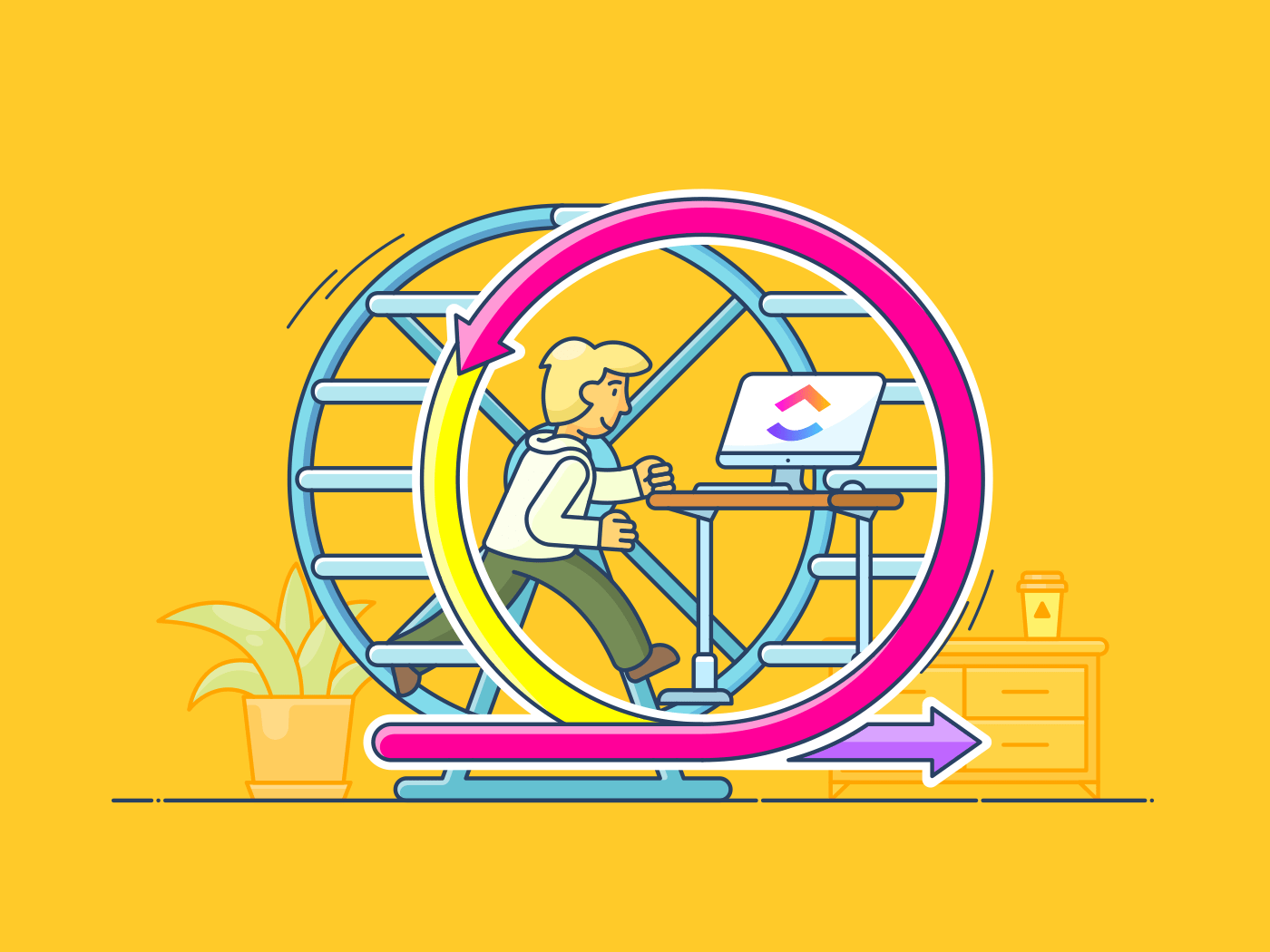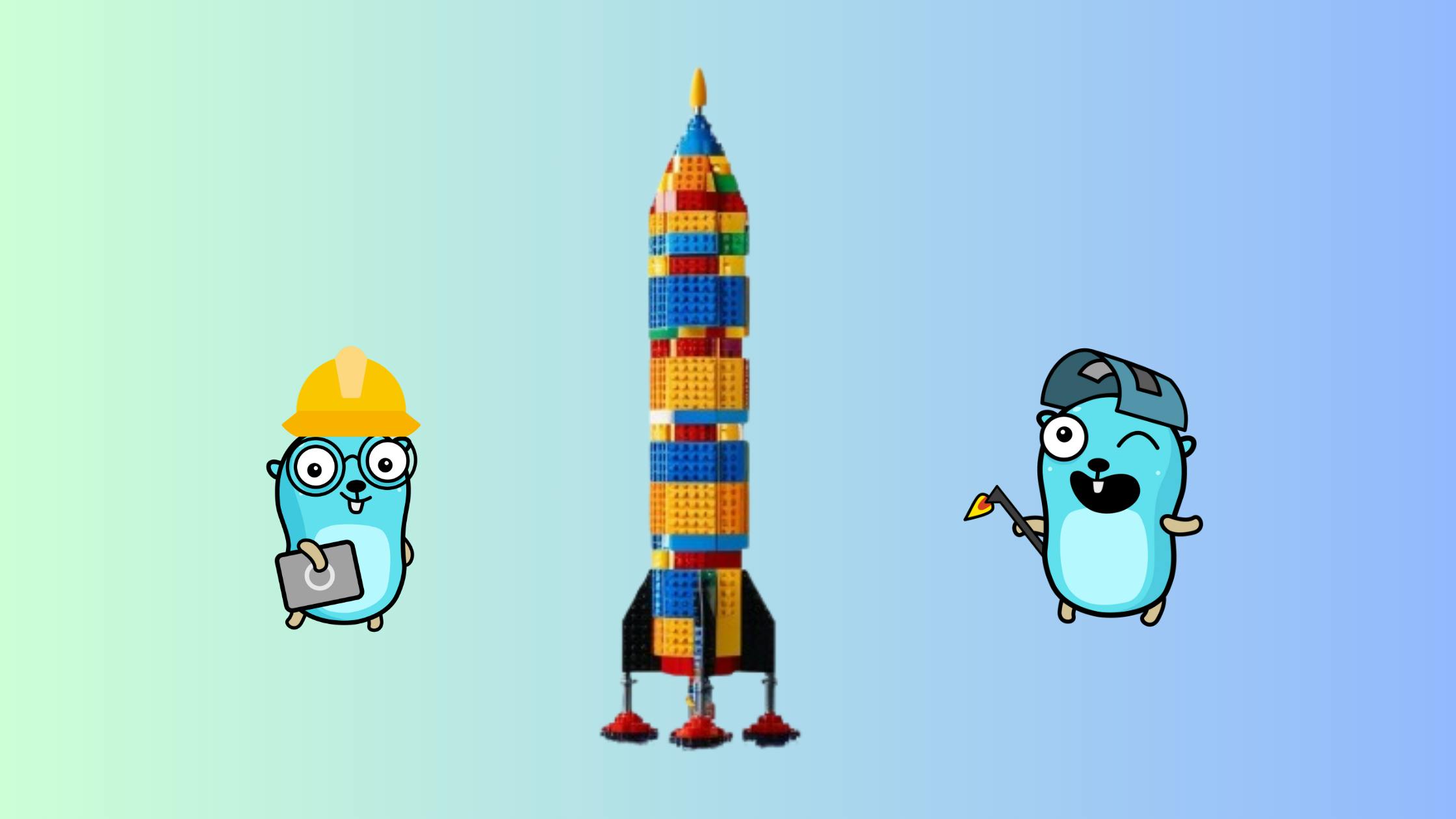The sprint starts, the pressure builds, and suddenly, everyone’s asking: ‘Where are we on this?’
For software development teams and project managers, staying organized and productive in Agile workflows is no small feat.
But here’s the payoff: a strong Agile culture doesn’t just improve teamwork—it can deliver real business results, boosting commercial performance by 277%.
The right Agile tools make all the difference. They streamline task management, improve team collaboration, and keep projects on track, even when priorities shift.
In this blog post, we’ll explore 15 of the best Agile tools to help you strengthen your workflows and achieve meaningful results. 📊
⏰ 60-Second Summary
Here’s a round-up of the top 15 Agile tools:
- (Best for comprehensive project management with customizable workflows)
- Jira (Best for software development teams requiring robust issue tracking)
- Asana (Best for task management with a user-friendly interface)
- Trello (Best for visual task management using boards and cards)
- Wrike (Best for resource management and detailed reporting in complex projects)
- Monday.com (Best for customizable workflows and team collaboration across various project types)
- Smartsheet (Best for spreadsheet-like project management with Gantt charts and automation)
- Zoho Sprints (Best for Agile project management with sprint planning and backlog management)
- Pivotal Tracker (Best for software development with story-based planning and velocity tracking)
- Businessmap (Best for Kanban-based project management with advanced analytics and automation)
- Taiga (Best for open-source Agile project management)
- Tuleap (Best for integrated ALM with Agile project management and DevOps support)
- Axosoft (Best for Agile project management with a focus on bug tracking and release planning)
- Nifty (Best for team collaboration with Agile task management)
- Miro (Best for collaborative whiteboarding and brainstorming sessions)
When selecting an Agile tool, it’s essential to consider features that enhance team collaboration and streamline project workflows. Here are key aspects to look for:
- Facilitates collaboration and communication: The tool should enable seamless interaction among team members, supporting real-time updates and discussions to keep everyone aligned
- Provides a central repository: A centralized space for all project-related information ensures easy access and organization of documents, tasks, and timelines
- Generates analytics: The ability to produce reports and analytics helps track progress, identify bottlenecks, and make informed decisions
- Offers workflow features: Customizable workflows that adapt to your team’s processes can enhance efficiency and guarantee consistency across projects
- Tracks progress visualization: Visual tools like Kanban boards or Gantt charts allow teams to monitor task status and project progression at a glance
- Scalability: Ensure the tool can grow with your team and handle increasing project complexity over time
- Tracks project status: Look for a tool that maintains up-to-date information on task completion and project status, enabling quick assessments and timely interventions when necessary
- Provides estimation tools: Accurate estimation features help manage sprint cycles and allocate resources efficiently
- Includes issue tracking: An effective agile tool should allow teams to monitor and manage issues or bugs throughout the project lifecycle, ensuring timely resolutions and maintaining project quality
Agile software development tools are essential for teams looking to stay organized, prioritize tasks, and adapt to changes efficiently. To help you find the right fit, here’s a list of 15 tools that can enhance how your team works with Agile methodology. 👇
1. (Best for all-in-one agile project management)
stands out as an exceptional Agile project management software, perfectly suited for developers and project managers. It aims to simplify workflows, enhance team collaboration, and deliver quality results as the everything app for work.
’s flexibility is one of its biggest strengths.
Agile Project Management
Whether you’re a startup or an enterprise, Agile Project Management adjusts to your processes instead of forcing you to change how you work. Its adaptability makes it ideal for various Agile frameworks, including Scrum and Kanban, while its customizable features enable your teams to tailor their workspace to unique workflows and preferences.
For instance, Tasks allows you to represent different types of workflows to align with your agile processes.
In addition, it offers a variety of views— Kanban View for visual task management, Gantt Charts for tracking dependencies and timelines, and Calendar View for scheduling and sprint planning.
If there’s one thing every Agile team knows, it’s that managing sprints can quickly turn chaotic without the right tools. That’s where Sprints come in. Designed to simplify every stage of the sprint process, including PI planning, this feature helps your team plan, track, and execute their work seamlessly.


It offers key charts like Burnup and Burndown to help you track sprint progress.
Burndown Charts show how much work is left, so you can easily spot delays and adjust as needed. Burnup Charts, on the other hand, highlight the work completed and what’s still left, giving you a clear, transparent view of any changes throughout the sprint.
Lastly, the Agile Project Management Template is perfect for non-software teams looking to adopt Agile methods like Kanban or Scrum.
It helps streamline requests into a backlog, making it easier to prioritize tasks. You can use a Board or Sprints to keep the team organized and focused on delivering value.
This template also supports agile ceremonies, like retrospectives, which are key for continuous improvement. They help your team reflect, adjust, and enhance productivity. Beyond task management, the agile template encourages collaboration, making your work environment more agile and responsive.
best features
- Flexible workspaces: Create Agile workflows tailored to your team by defining statuses, task structures, and labels that fit your processes
- Integrations: Connect with tools like Jira, GitHub, and Slack while automating workflows for smoother sprint execution
limitations
- The platform’s extensive capabilities can be overwhelming for users
- The mobile application lacks some features available on the desktop version
pricing
- Unlimited: $7/month per user
- Business: $12/month per user
- Enterprise: Contact for pricing
- Brain: Add to any paid plan for $7/month per user
ratings and reviews
- G2: 4.7/5 (9,000+ reviews)
- Capterra: 4.6/5 (4,000+ reviews)
What are real-life users saying about ?
Discover a collection of customizable Agile templates to help you hit the ground running. Get started with these powerful resources today!
2. Jira (Best for software development teams requiring robust issue tracking)
Jira is a robust tool tailored for agile software development teams. Its customizable workflows and advanced reporting capabilities make it ideal for managing complex projects.
The tool provides Project Boards to visualize task statuses and progress across Agile and traditional project management approaches. However, setting up Jira can feel like solving a Rubik’s Cube—it often requires technical expertise to configure workflows, as highlighted in many Jira reviews.
Jira best features
- Prioritize tasks and plan iterative work cycles with sprint planning, backlog grooming, and real-time reporting
- Integrate with apps like Figma and GitHub to centralize discussions and share updates
- Connect technical teams with go-to-market teams with Shared Release Calendars
- Get a bird’s eye perspective of project timelines, dependencies, and potential bottlenecks using Timeline View
Jira limitations
- Jira can get expensive quickly for small teams with limited budgets
- It’s complexity can make onboarding a challenge, especially for non-developers
Jira pricing
- Free
- Standard: $7.53/month per user
- Premium: $13.53/month per user
- Enterprise: Custom pricing
Jira ratings and reviews
- G2: 4.3/5 (6000+ reviews)
- Capterra: 4.4/5 (14,900+ reviews)
🔍 Did You Know? The Agile framework Scrum takes its name from a rugby formation where players huddle tightly to restart play, symbolizing teamwork and close collaboration.
3. Asana (Best for task management with a user-friendly interface)
Asana is a user-friendly project management tool that balances simplicity with functionality. Its intuitive interface and versatile project views support various workflows, providing tools to connect company-wide objectives with day-to-day tasks.
Teams can create tasks, assign them to team members, set deadlines, and track progress, ensuring that everyone is aligned and accountable. This feature supports agile values like delivering incremental growth and maintaining a steady workflow.
Asana best features
- Enable teams to add custom data fields to tasks, facilitating tailored information tracking
- Allocate resources effectively with insights into workloads, timelines, and project dependencies to prevent bottlenecks
- Save time by creating efficient processes with customizable rules and advanced automations
- Use AI-powered assistants to analyze data, identify challenges, and provide actionable recommendations
Asana limitations
- Managing multiple accounts with different emails can lead to login and navigation challenges
- Task-related pop-ups block menus, requiring manual closure and disrupting workflow
- No built-in tools for time tracking
Asana pricing
- Personal: Free
- Starter: $13.49/month per user
- Advanced: $30.49/month per user
- Enterprise: Custom pricing
Asana ratings and reviews
- G2: 4.4/5 (10,700+ reviews)
- Capterra: 4.5/5 (13,200+ reviews)
What are real-life users saying about Asana?
💡 Pro Tip: Run a ‘pre-mortem’ before each sprint. This involves imagining potential problems or risks ahead of time so the team can proactively plan solutions and avoid surprises.
4. Trello (Best for visual task management using boards and cards)
Trello is a visual Agile project management software that uses boards, lists, and cards to help teams organize tasks. It provides the flexibility to customize workflows while offering advanced automation through Butler and seamless integration with popular tools like Slack and Jira.
The tool’s strength lies in its ability to combine simplicity with powerful features. It gives teams the clarity to concentrate efforts on high-priority tasks and stay productive without getting bogged down by complicated processes.
Trello best features
- Set up rules, buttons, and commands to automate repetitive actions like moving cards or sending notifications
- Create one-click actions to trigger a sequence of tasks directly from your cards or boards
- Prioritize tasks and identify stale items visually with features like card aging and voting
- Extend functionality with Power-Ups like Story Points, Jira sync, or Google Calendar integration
Trello limitations
- Trello’s interface feels dated compared to competitors and lacks visual appeal
- Free accounts quickly hit the board limit, requiring an upgrade to the paid plan, limiting scalability for teams on a budget
- Task communication within the platform is limited
Trello pricing
- Free
- Standard: $6/month per user
- Premium: $12.50/month per user
- Enterprise: $17.50/month per user (billed annually)
Trello ratings and reviews
- G2: 4.4/5 (13,600+ reviews)
- Capterra: 4.5/5 (23,300+ reviews)
🧠 Fun Fact: One of Agile’s core principles is flexibility, but many organizations rigidly follow Agile frameworks like Scrum, leading to a paradox known as ‘Agile purism.’
5. Wrike (Best for resource management and detailed reporting in complex projects)
Wrike helps teams manage Agile projects with customizable workflows and real-time collaboration. It offers advanced reporting and analytics, so teams can track performance in real time and make data-driven decisions.
Wrike’s focus on adaptability, automation, and collaboration makes it a good choice for teams aiming to scale efficiently and achieve their goals with agility.
Wrike best features
- Enjoy enterprise-grade protection with double encryption, role-based access, and Wrike Lock to manage your own encryption keys
- Use 360° views to track real-time project updates, ensuring teams stay on the same page
- Leverage built-in AI to generate content, edit text, and summarize discussions, reducing manual effort and speeding up execution
- Tailor your workspace to match your team’s needs with custom item types, terminology, and layouts
Wrike limitations
- The platform’s appearance lacks modern aesthetics
- The number of licenses provided for the price feels insufficient
- Limit of 200 active tasks on the free version, which can quickly become restrictive for teams managing multiple projects or complex workflows
Wrike pricing
- Free
- Team: $10/month per user
- Business: $24.80/month per user
- Enterprise: Custom pricing
- Pinnacle: Custom pricing
Wrike ratings and reviews
- G2: 4.2/5 (3,700+ reviews)
- Capterra: 4.3/5 (2,700+ reviews)
What are real-life users saying about Wrike?
🧠 Fun Fact: The Agile Manifesto was created in February 2001 by 17 software developers during a ski retreat in Snowbird, Utah. Their goal was to find better ways to develop software collaboratively.
6. Monday.com (Best for customizable workflows and team collaboration across various project types)
Monday.com helps teams refine processes, improve collaboration, and drive results. As an agile tool, it adapts seamlessly to dynamic work environments, enabling businesses to align strategies with execution.
Its robust portfolio management capabilities provide a high-level overview of ongoing tasks, while detailed project tracking features keep teams aligned and focused. From automating manual tasks to visualizing progress, Monday.com bridges silos and promotes accountability.
Monday.com best features
- Track goals and OKRs to ensure every project aligns with overarching company objectives
- Manage risks and bottlenecks with critical path overlays and milestone tracking to stay ahead of delays
- Streamline project intake using custom forms to collect requests and manage approvals in a centralized manner
Monday.com limitations
- Teams transitioning to Monday.com may encounter a learning curve
Monday.com pricing
- Free
- Basic: $12/month per user
- Standard: $14/month per user
- Pro: $24/month per user
- Enterprise: Custom pricing
Monday.com ratings and reviews
- G2: 4.7/5 (12,600+ reviews)
- Capterra: 4.6/5 (5,300+ reviews)
7. Smartsheet (Best for spreadsheet-like project management with Gantt charts and automation)
Smartsheet adapts to a wide variety of team needs, whether you’re managing small projects, overseeing enterprise portfolios, or driving innovation. It combines robust project management features with flexibility, making it a powerful platform for agile teams.
With Smartsheet, you can share updates, assign tasks, and work in real-time, ensuring all team members stay aligned regardless of location. Its integrations with popular tools, no-code automation capabilities, and AI-driven insights will help your teams achieve goals faster and smarter.
Smartsheet best features
- Set up no-code workflows to eliminate repetitive tasks, reduce errors, and save valuable time
- Generate custom PDFs, automate contract preparation, and integrate e-signature tools like DocuSign
- Ensure data protection with advanced controls such as encryption keys, activity logs, and admin tools
- Stay connected with desktop and mobile apps, offering real-time updates and ease of use on the go
Smartsheet limitations
- Handling extensive Agile projects with multiple iterations and teams can become cumbersome, potentially affecting efficiency
- Smartsheet primarily functions as a spreadsheet-based tool and may not provide the specialized features required for Agile processes
Smartsheet pricing
- Pro: $12/month per user
- Business: $24/month per user
- Enterprise: Custom pricing
Smartsheet ratings and reviews
- G2: 4.4/5 (18,000+ reviews)
- Capterra: 4.5/5 (3,300+ reviews)
What are real-life users saying about Smartsheet?
💡 Pro Tip: Prioritize customer value. When selecting tasks for a sprint, always ask: ‘How does this contribute to delivering value for the customer?’ This ensures you stay aligned with business goals and customer needs.
8. Zoho Sprints (Best for Agile project management with sprint planning and backlog management)
Zoho Sprints is an agile project management tool designed to help teams plan, collaborate, and deliver projects efficiently. If you’re new to agile or experienced, it simplifies project management and adapts to your needs.
The tool helps teams prioritize backlogs, visualize workflows, and stay on track with tasks, making complex processes easier. Its flexibility suits both small startups and large enterprises, with third-party integrations and features for iterative development.
Smartsheet best features
- Coordinate cross-functional teams with the Release Planning module to deliver shippable features
- Log, manage, and export time data with the inbuilt Timesheet module, distinguishing between billable and non-billable hours
- Monitor progress using burndown charts, velocity charts, and other metrics to measure team efficiency
Smartsheet limitations
- No consistent method for creating and accessing sprints, leading to confusion
- Charts lack click-through functionality for accessing detailed data
- The iOS app is challenging to navigate and lacks usability improvements
Smartsheet pricing
- Elite: $3/month per user
- Premier: $6/month per user
Smartsheet ratings and reviews
- G2: 4.4/5 (150+ reviews)
- Capterra: 4.5/5 (250+ reviews)
🔍 Did You Know? Scaled Agile Framework (SAFe) remains the most popular enterprise-level framework, with 26% adoption.
9. Pivotal Tracker (Best for software development with story-based planning and velocity tracking)
Pivotal Tracker simplifies tracking progress, managing iterations, and delivering high-quality products. Unlike other tools, It emphasizes maintaining steady progress with automatic planning, helping teams stick to realistic timelines based on their past performance.
The tool makes it easy to see how your projects advance at both the macro and micro levels, allowing agile teams to tackle potential issues before they escalate.
Pivotal Tracker best features
- Let the system calculate your team’s velocity, making planning more accurate based on past performance
- Use project health reports like Burnup, Cumulative Flow, and Cycle Time to understand the trends and pinpoint bottlenecks
- Easily identify and resolve project impediments with story blockers, ensuring smoother progress
Pivotal Tracker limitations
- The mobile app is slow, buggy, and often displays incorrect information, like unassigned owners
- Many tasks require manual handling that could be automated to improve efficiency
Pivotal Tracker pricing
- Free
- Enterprise: Custom pricing
Pivotal Tracker ratings and reviews
- G2: 4.1/5 (100+ reviews)
- Capterra: 4.3/5 (150 reviews)
What are real-life users saying about Pivotal Tracker?
🧠 Fun Fact: Workshops often use games like Scrum Poker and Lego Scrum to teach Agile principles in a fun and engaging way.
10. Businessmap (Best for Kanban-based project management with advanced analytics and automation)
Ideal for enterprises that need both operational and strategic oversight, Businessmap provides clear visibility across all projects and portfolios, helping teams stay connected and focused.
Its flexible, outcome-driven approach ensures that businesses can align their goals with actual work delivery, creating a powerful bridge between strategy and execution.
The platform has advanced features like interlinked boards, customizable swimlanes, and automated projections for tracking agile metrics. It also helps organizations manage dependencies, measure progress, and adjust plans as needed.
Businessmap best features
- Create interlinked boards to manage cross-departmental dependencies, ensuring all teams stay aligned
- Use swimlanes to separate tasks by type or service class, improving workflow clarity
- Refine your processes further by dividing stages into sub-columns for more detailed task management
- Visualize and manage cross-team dependencies with card links such as predecessor-successor or parent-child relationships
Businessmap limitations
- Built-in reporting tools are not user-friendly; external software is needed for generating dynamic reports
- Becomes extremely slow as more users and leads are added, affecting overall performance
Businessmap pricing
- Month by month: $179/month (for 15 users)
Businessmap ratings and reviews
- G2: Not enough reviews
- Capterra: 4.8/5 (200+ reviews)
🤝 Friendly Reminder: Use metrics, but avoid overloading your team with data. Track key metrics like velocity, cycle time, or lead time, but focus on the insights that directly impact team performance and project outcome.
11. Taiga (Best for open-source Agile project management)
Taiga is an open-source agile software that prioritizes collaboration, transparency, and efficiency. It emphasizes simplicity and ease of use without sacrificing functionality.
The platform’s distinct strength lies in its ability to break down complex tasks into manageable stories and track progress against sprints. With a focus on collaboration, teams can effortlessly prioritize, assign, and complete tasks while maintaining alignment with stakeholders.
Taiga best features
- Adapt quickly with real-time edits and updates, allowing teams to adjust to changing requirements effortlessly
- Prioritize effectively by using dynamic story ranking, ensuring the most important tasks get done first
- Track progress with burndown charts and velocity tracking, providing insights into team productivity
Taiga limitations
- Embedding images and videos is cumbersome
- Lack of advanced markdown features
- Sprint creation and editing could be more streamlined and user-friendly
- The user interface can be distorted on certain screen resolutions, affecting usability
Taiga pricing
- Taiga Self-hosted: Free
- Taiga Cloud: $70/month
- Taiga on Your Premises: Custom pricing
Taiga ratings and reviews
- G2: 4.3/5 (70+ reviews)
- Capterra: 4.3/5 (85+ reviews)
What are real-life users saying about Taiga?
💡 Pro Tip: Involve the whole team in sprint planning. Don’t let only the product owner make decisions. Involving everyone in the planning process encourages ownership, provides valuable insights, and boosts team morale.
12. Tuleap (Best for integrated ALM with Agile project management and DevOps support)
With Tuleap, you get a flexible platform that adapts to various team sizes and project requirements. You can organize backlogs, plan releases, track progress, and visualize data with ease. This tool’s open-source nature ensures no vendor lock-in, offering freedom and security for teams requiring agility and compliance.
It offers features that support everything from project tracking and agile planning to test management and DevOps integration. This makes it ideal for automotive, defense, and healthcare industries, where compliance with standards such as ISO, CMMI, and SPICE is essential.
Tuleap best features
- Manage both automated and manual tests in one platform, helping identify bugs early
- Build customized dashboards to keep track of project statuses and KPIs in real-time
- Plan sprints and releases by easily dragging tasks from the backlog to upcoming milestones
- Implement Scrum, Kanban, or SAFe® to manage your team’s workflow
Tuleap limitations
- Integration with popular IDEs like Visual Studio or JetBrains could be improved
- Cross-links between different projects are underdeveloped and could use significant improvement
- Some plugins are outdated and tend to disappear over time, limiting functionality
Tuleap pricing
- myTuleap: $17.65/month per user (billed annually)
- Cloud Premium: $33.75/month per user (billed annually)
- Cloud Ultimate: Custom pricing
Tuleap ratings and reviews
- G2: Not enough reviews
- Capterra: 4.5/5 (30+ reviews)
🔍 Did You Know? 63% of Agile users adopt Scrum at the team level as their primary methodology.
💡 Pro Tip: Use ‘swarming’ to tackle blockers. When a task is stuck, pull in extra team members to break the deadlock quickly. This ensures your team keeps momentum and doesn’t get bogged down on a single issue for too long.
13. Axosoft (Best for Agile project management with a focus on bug tracking and release planning)
Axosoft monitors progress through various tools like burndown charts, cycle time, and projected ship dates, ensuring teams stay on track for releases. Its comprehensive suite of features supports Scrum, Kanban, and bug-tracking processes, making it a reliable choice.
One standout feature is its Release Planner, which allows teams to visualize the capacity of their sprint and individual team members, ensuring the right workload distribution. The Card View lets users interact with work items on a customizable Kanban board, giving teams control over work-in-progress limits and task status.
Axosoft best features
- Estimate work using various units like minutes, hours, days, or story points
- Communicate progress and obstacles daily with the Daily Scrum Mode
- Rank tasks from highest to lowest priority using Stack Rank mode
Axosoft limitations
- Personal user interface is cluttered and could be more streamlined for better intuitiveness
- Outdated and unresponsive layout, which makes user onboarding difficult and time-consuming
Axosoft pricing
- Hosted by Axosoft: $126/month per 5 users
- Hosted by you: $1,250
Axosoft ratings and reviews
- G2: 3.9/5 (40+ reviews)
- Capterra: 4.2/5 (35+ reviews)
What are real-life users saying about Axosoft?
💡 Pro Tip: Embrace ‘fail-fast’ to identify issues early. Don’t hesitate to pivot when something isn’t working. The sooner you spot a problem, the easier it is to make adjustments without derailing the entire project.
14. Nifty (Best for team collaboration with Agile task management)
Nifty combines features like roadmaps, tasks, discussions, agile documentation, and reporting. Its intuitive interface supports streamlined project planning, task management, and real-time collaboration, making it a go-to solution for teams looking to stay aligned and efficient.
From automating progress reporting to integrating tools, Nifty ensures operational clarity while keeping projects on track. With its AI-powered features, such as workflow automation and project creation, Nifty helps teams save time and make smarter decisions.
Nifty best features
- Collaborate on documents directly within the platform or sync with Google Docs, Sheets, and Slides
- Import data seamlessly from tools like Asana, Trello, Jira, or .CSV files to transition without disruptions
- Use Nifty Orbit AI to generate custom workflows, create tasks, and streamline project setups
- Gather and prioritize tickets through forms with automated assignments to ensure resolutions
Nifty limitations
- Difficulty in canceling or changing plans, despite FAQ instructions suggesting it should be simple
- Search functionality is not available across all components
- Lacks deeper task hierarchy; only tasks and subtasks are supported, with no additional levels
Nifty pricing
- Free
- Personal: $12/month per user
- Pro: $16/month per user
- Business: $25/month per user
- Enterprise: Custom pricing
Nifty ratings and reviews
- G2: 4.7/5 (430+ reviews)
- Capterra: 4.6/5 (420+ reviews)
💡 Pro Tip: Focus on ‘just enough’ documentation. Agile values working software over comprehensive documentation, so avoid overloading your team with unnecessary paperwork. Use concise, targeted documentation that directly supports the team’s goals.
15. Miro (Best for collaborative whiteboarding and brainstorming sessions)
Miro transforms collaboration into a seamless and engaging process for Agile teams. With its AI-powered Intelligent Canvas, Miro empowers teams to move from brainstorming to execution without breaking their workflow.
This platform integrates dynamic tools like interactive widgets, AI assistants, and customizable project roadmap templates, ensuring that teams can adapt it to their unique Agile processes. Its powerful integrations with platforms like Google Workspace, Jira, and Adobe make it the go-to tool for Agile teams aiming to reduce context switching and maximize efficiency.
Miro best features
- Use diagrams, documents, and timelines to convert brainstorming sessions into actionable plans
- Transform ideas into interactive prototypes in seconds with Miro AI
- Utilize dot voting, polls, and estimation widgets to boost team participation during planning and review sessions
- Integrate with 160+ tools like Jira, Confluence, and Slack to create a unified workspace tailored to your team’s needs
Miro limitations
- The interface can feel obstructive, slow, and overly ‘clicky’
- Merging and organizing text or mapping items can be difficult, requiring additional effort to achieve a clean, uniform visual
Miro pricing
- Starter: $10/month per user
- Business: $16/month per user
- Enterprise: Custom pricing
Miro ratings and reviews
- G2: 4.7/5 (7,200+ reviews)
- Capterra: 4.7/5 (1,500+ reviews)
🤝 Friendly Reminder: Be realistic about how much your team can handle in one sprint. Overcommitting can lead to burnout and missed deadlines, so focus on delivering quality over quantity.
Sprint Ahead With
Choosing the right Agile tool is key to making your team more efficient and organized. Among the other project management tools listed above, stands out as the top choice.
is the everything app for work that covers every aspect of Agile project management. It offers customizable views like Kanban boards and Gantt charts, plus Docs and Whiteboards for seamless collaboration, all of which adapt to your team’s specific workflow.
Features like task tracking, team alignment tools, and productivity enhancers work together to streamline your Agile processes, making it easier to manage everything in one place. simplifies the complexities of Agile, keeping your projects organized and your team focused on what matters most.
Sign up to for free today! ✅


Everything you need to stay organized and get work done.














